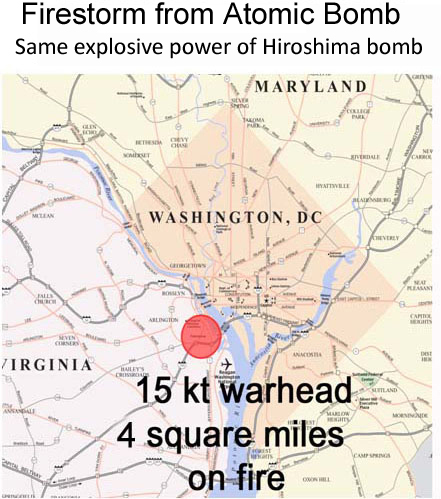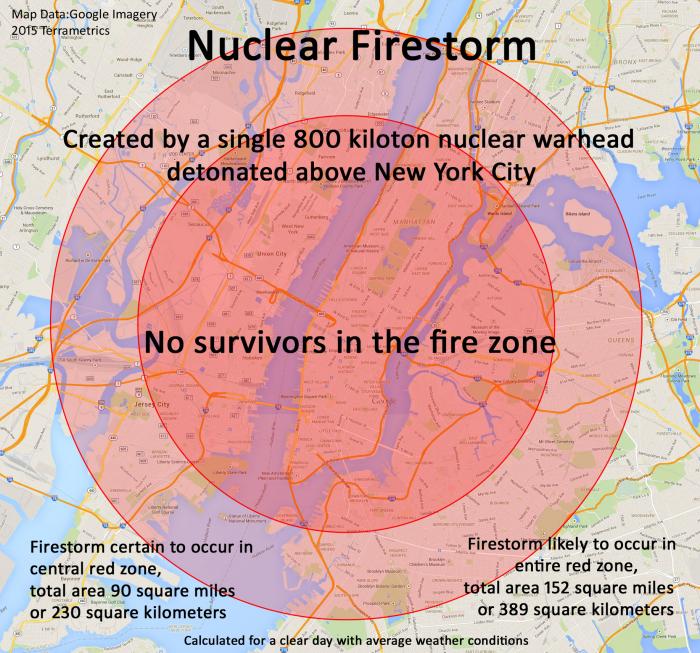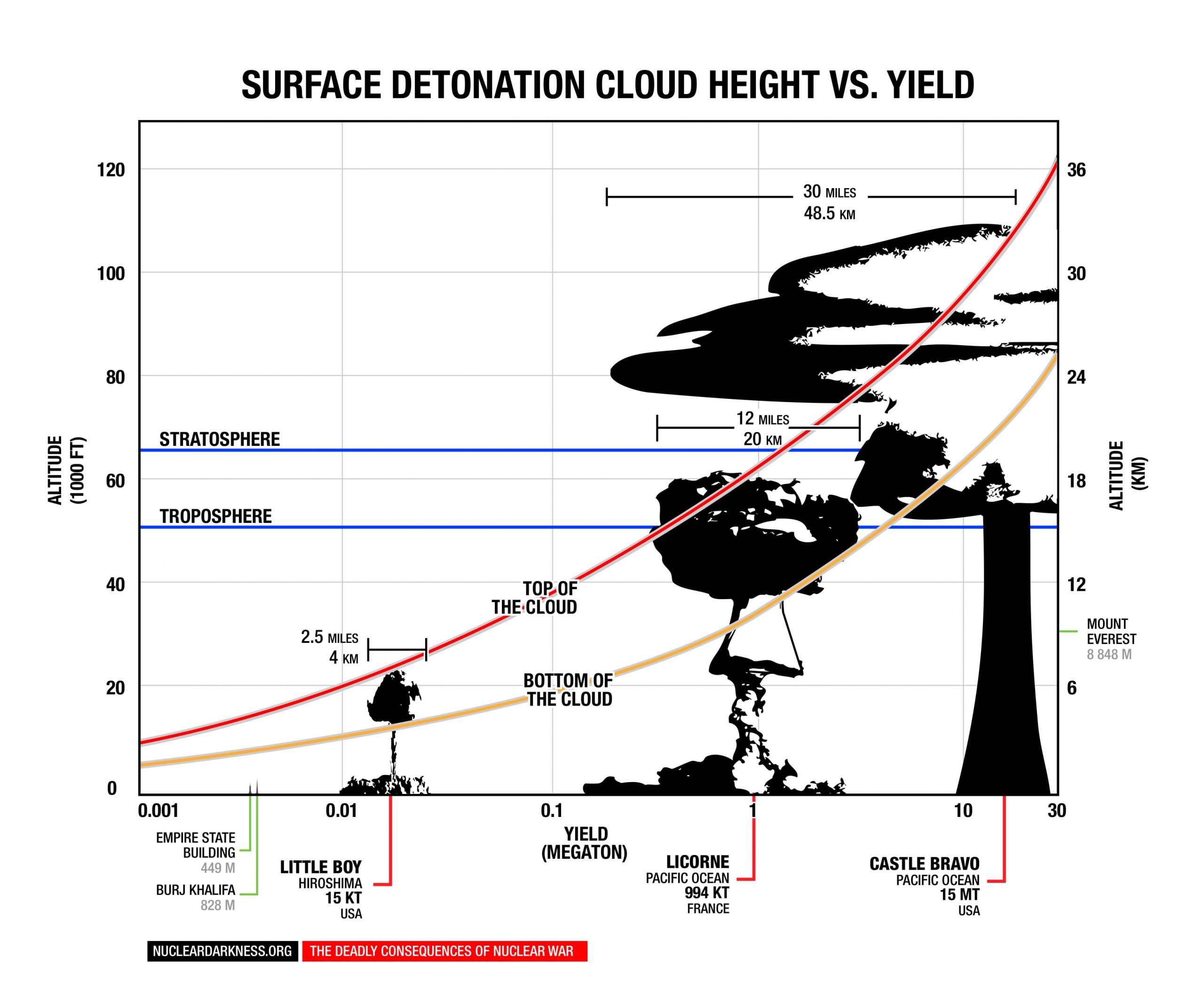Nuclear weapons are like a small piece of the sun. The surface of a fireball produced by a nuclear detonation is hotter than the surface of the sun. The immense heat produced by a nuclear detonation can instantly ignite fires over many tens or even hundreds of square miles. These fires can all become a single, immense nuclear firestorm which will kill every living thing within the fire zone.
The simplest type of nuclear weapon is the atomic bomb, which is roughly 1000 times more power than the largest “conventional” high-explosive bomb. The atomic bomb, which the US dropped on Hiroshima during World War 2, exploded with the power of 15,000 tons (15 kilotons) of TNT. That was roughly about 1000 times more powerful than the British “blockbuster” bomb, which contained 1.5 tons of high-explosive .

A modern strategic thermonuclear weapon is typically 7 to 85 times more powerful than a simple atomic bomb. The image below is the firestorm likely to be created by thermonuclear warhead with an explosive power equivalent to 800,000 tons of TNT (one ton = 2000 pounds in the US). The US and Russia keep a total of about 1600 to 2000 strategic nuclear warheads at launch-ready status, ready to be launched within 2 to 15 minutes.

The largest nuclear weapon ever tested was about 3800 times more powerful than the first atomic bombs and had the capacity to ignite a firestorm over an area greater than 4000 square miles. There is no theoretical limit to the size of a nuclear weapon; it is theoretically possible to construct weapons hundreds or thousands of times larger than any yet tested.

